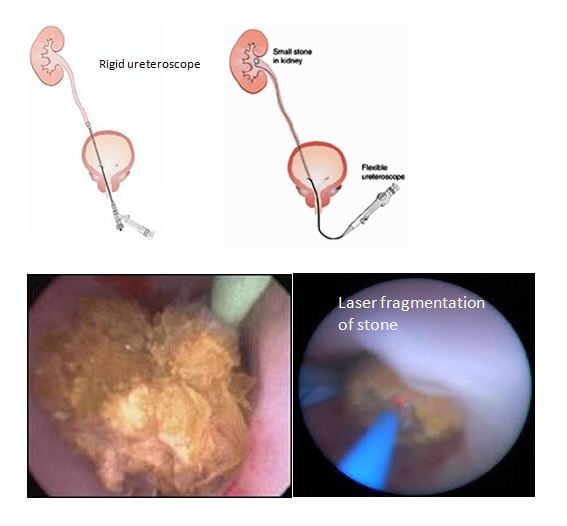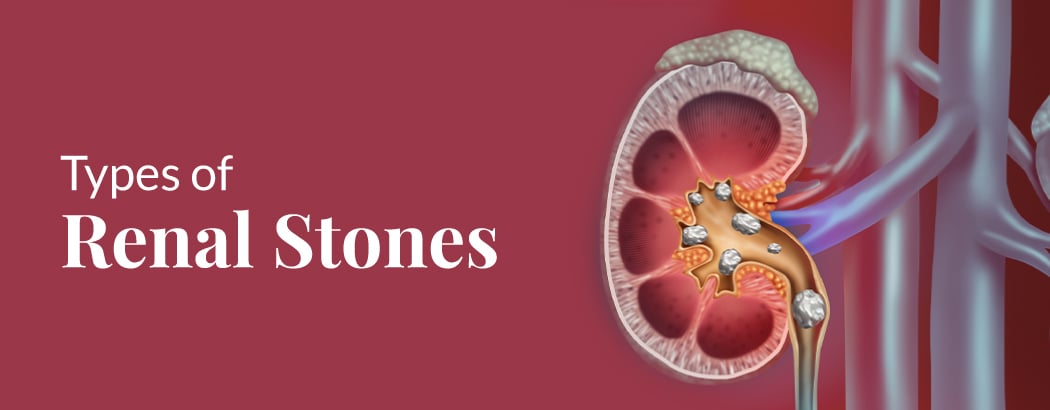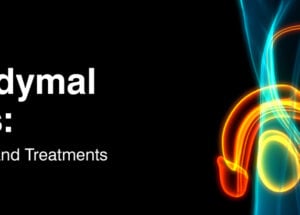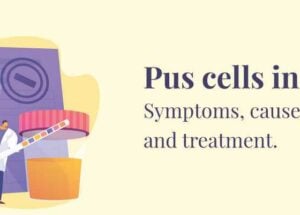Ureteroscopy
You have been advised this operation because of stone in ureter or kidney.
This involves using a telescope (semi-rigid or flexible) passed into yourbladder through your urethra (waterpipe) to fragment and/or removestones from your ureter or kidney. We sometimes need to leave atemporary stent in your ureter after the procedure.
Before the operation
Your urologist will briefly review your historyand medications, and will discuss the surgery again with you to confirmyour consent.
You will need to see an anesthetist who will discuss the options of a general anestheticor spinal anesthetic.
Please tell the urologist if you have:
- An implanted foreign body (stent, joint replacement, pacemaker, heart valve, blood vessel graft);
- A regular prescription for a blood thinning agent (warfarin, aspirin, clopidogrel, rivaroxaban or dabigatran)
We give a test dose of antibiotic before the operation.
Details of the procedure
- We normally use a full general anesthetic and you will be asleepthroughout the procedure
- we usually give you an injection of antibiotics before the procedure,after you have been checked for any allergies
- we put a telescope into your bladder, through your urethra(waterpipe), and use it to put a guidewire up into your kidney, pastthe stone in the ureter, using X-ray control.
- We then put the ureteroscope (semi-rigid or flexible) up to the level ofthe stone by following the guidewire
- We fragment the stone using an energy source; this is usually a laserbut, occasionally, we use a lithoclast (a tiny pneumatic drill)
- Using the laser, we either “dust” thestone, leaving tiny fragments whichcan pass by themselves, or break itinto smaller pieces (pictured) whichcan be removed using special graspingdevices
- We usually insert a temporarydrainage tube (a ureteric stent) into theureter at the end of the procedure; thisis normally removed in 1 weeks’ time or longer depending on the situation.
- Occasionally, we need to perform a “second-look” ureteroscopy at alater stage to treat residual stones
- Usually we put in a bladder catheter which is removed thefollowing morning
Side effects
- Mild burning or bleeding on passing urinefor a short time after the procedure(especially if you have a ureteric stent)
- Temporary insertion of a ureteric stentwhich needs to be removed later
- Stone recurrence – 50% five to 10 years, requiring furthersurgery or other treatment
- Residual stones requiring further surgeryor other treatment (more likely for stonescloser to the kidney)
- Failed to access the ureter (or reach thestone) requiring further surgery or othertreatment
- Temporary insertion of a bladder catheter
- Infection requiring antibiotic treatment
- Minor damage to the wall of the ureter(small perforation, mucosal abrasion,bleeding) requiring stenting orpercutaneous nephrostomy
- Narrowing of the ureter due to delayed scarformation (stricture) which may requirefurther treatment
- Anaesthetic problems – your anaesthetistcan estimate yourindividual risk
- Stent symptomsif a stent is inserted – passing urine frequently, crampy pain in lower part of abdomen, pain in back in the kidney area, pain while passing urine and occasionally blood in urine. These symptoms usually resolve within 2 to 3 days after stent removal
What can I expect when I get home?
- You should drink twice as much fluid as you would normally for thefirst 24 to 48 hours, to flush your system through and reduce the riskof infection
- Recovery from ureteroscopy is usually rapid; you may return to workwhen you are comfortable enough
- If you have had a stent put in, it may cause pain in your kidney areawhen you pass urine, or pain in your bladder; this usually settlesquickly but, if you feel unwell or feverish, severepain on passing urine, inability to pass urine or worsening bleeding you should contact the urologistimmediately You can reduce your risk of further stone formation by altering your dietand fluid intake.
Smoking and surgery
Ideally, we would prefer you to stop smoking before any procedure.Smoking can worsen some urological conditions and makes complicationsmore likely after surgery.
Driving after surgery
It is your responsibility to make sure you are fit to drive after any surgical procedure.









